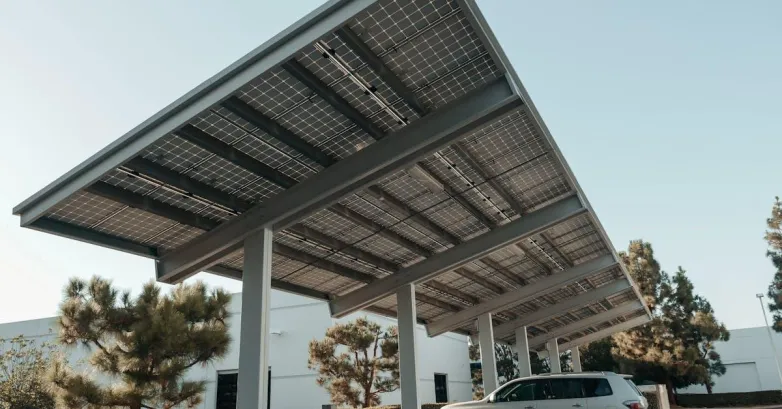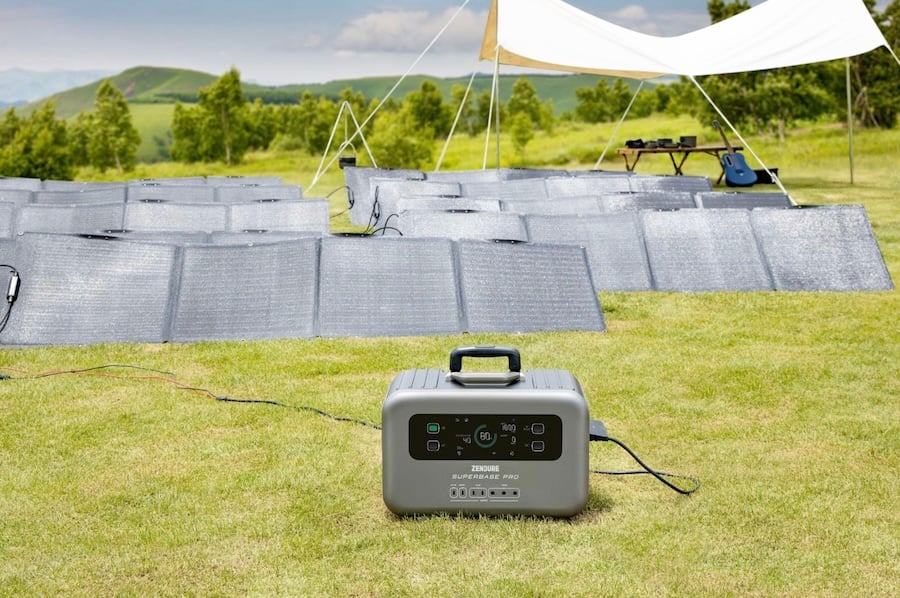Solar Generator Showdown: Power, Portability & Price Balance for Your Energy Needs

As we dive into the world of solar generators, it’s clear that the right choice can make all the difference for outdoor adventures or emergency preparedness. With so many options available, we’re faced with the challenge of balancing power, portability, and price. Whether we’re camping in the wilderness or preparing for unexpected outages, understanding these key factors is essential.
In this showdown, we’ll explore various models and their features, including versatile systems from Lion Energy, helping us find the perfect solar generator that meets our needs without breaking the bank. By comparing performance metrics and user experiences, we’ll empower ourselves to make informed decisions. Let’s embark on this journey to harness the sun’s energy and discover the ideal solar generator for our lifestyle.
Understanding Solar Generators
Solar generators harness solar energy to provide electricity in a portable format. They serve various purposes, from camping trips to emergency power sources.
What is a Solar Generator?
A solar generator combines solar panels, a battery, and an inverter into one unit. Solar panels collect sunlight and convert it into electricity. The battery stores this energy for later use, while the inverter transforms the stored energy into usable AC power for regular devices. These generators offer an eco-friendly alternative to traditional fuel-powered generators, producing no emissions and requiring minimal maintenance.
Key Components of Solar Generators
Solar generators consist of three key components:
-
Solar Panels: Solar panels capture sunlight and convert it to electricity.
-
Battery Pack: Battery packs store the collected energy, allowing for usage when sunlight is unavailable.
-
Inverter: Inverters change DC power from the battery into AC power, enabling compatibility with household appliances.
These components work together to ensure efficient energy conversion, storage, and usage, making solar generators versatile for various applications.
Evaluating Power Needs
Understanding our power requirements is essential when selecting a solar generator. An effective evaluation ensures we choose a generator that meets our energy demands without compromising portability or budget.
Determining Your Energy Requirements
We can accurately determine our energy requirements by calculating the total wattage of devices we plan to use. Start by listing each device's wattage, this information is often found on the device labels or user manuals. For instance, a laptop typically consumes 50 to 100 watts, while a portable refrigerator may require 40 to 100 watts. Summing these values provides clarity on the total wattage needed, helping us select a generator capable of handling peak loads and surge requirements. Additionally, consider anticipated usage time to refine our generator choice for daily needs.
Types of Devices to Power
Different devices require various amounts of power, influencing our generator selection. Common devices include:
-
Smartphones: Use about 5 to 20 watts.
-
Laptops: Require approximately 50 to 100 watts.
-
Small appliances: Such as blenders and microwaves can range from 300 to 1200 watts.
-
Refrigerators: Typically consume between 40 and 100 watts.
-
Power tools: Average around 500 to 1500 watts depending on the type.
By evaluating which devices we intend to power, we can match them with the appropriate solar generator specifications, ensuring efficiency and performance during use.
The Importance of Portability
Portability plays a crucial role in the effectiveness of solar generators, especially for outdoor activities and emergency situations. We prioritize finding models that combine lightweight design and compact size for easier transport.
Factors Affecting Portability
Weight significantly impacts portability; lighter generators enable easier handling and transport. Dimensions also matter; compact units fit into tighter spaces, whether in a vehicle or storage area. Battery capacity influences weight; larger batteries may offer extended run times but add bulk. Additionally, built-in handles and wheels enhance mobility, making it simpler to maneuver heavy units. Finally, the type of solar panels contributes; flexible panels can be folded or rolled up, decreasing overall size while increasing versatility.
Popular Portable Solar Generators
Renowned models in the portable solar generator market include the Jackery Explorer 240, known for its lightweight design and 240Wh capacity, ideal for short outings. The goal Zero Yeti 400 stands out with a 400Wh capacity and multiple output ports, catering to a variety of devices. Our assessment of the Bluetti AC50S highlights its strong performance with 300Wh storage and fast recharging capabilities. Each of these options balances power with portability, fitting diverse needs and budgets, making them effective choices for users seeking reliable solar solutions.
Analyzing Price Points
Price plays a crucial role in selecting a solar generator. Understanding how to budget effectively for a solar generator can help us make informed choices without overspending.
Budgeting for a Solar Generator
Creating a budget for a solar generator involves assessing our needs and outlining essential features. Entry-level models start around $200 to $500, suitable for basic use and small devices. Mid-range generators typically range from $500 to $1,000, delivering a balance of power and portability for camping trips and light home backup. High-end models can exceed $1,000 and offer advanced features, greater capacity, and faster charging times aimed at heavy users or extended usage. Knowing our intended purpose allows us to determine the right budget.
Comparing Features vs. Cost
Evaluating features in relation to cost helps us identify the best value solar generator. Essential specifications to consider include power output, battery capacity, and charging options. Generators with higher wattage support more devices but often come at a premium. Additional features like multiple ports, fast charging, and app connectivity also influence pricing. When comparing models, it’s vital to weigh these factors against our budget to ensure we select a generator that meets our energy needs while remaining cost-effective.
Making the Right Choice

Photo by Zendure Power Station on Unsplash
Selecting the right solar generator requires careful consideration of various factors. Our goal is to help you navigate the essential balance of power, portability, and price.
Balancing Power, Portability, and Price
We prioritize understanding your power needs while balancing portability and price. While high power output might be necessary for larger devices, it often comes at the cost of weight and size. Lightweight models usually offer lower wattage, making them ideal for casual use but less effective for high-demand tasks. Budget plays a critical role too; many reliable solar generators start around $200, and expectations should align with features. A generator that meets your energy requirements while remaining transportable within your budget represents the ideal choice.
Top Recommendations
We suggest considering several top solar generators based on performance and value. The Jackery Explorer 240 offers 240Wh capacity and weighs only 6.6 lbs, making it portable and effective for small devices. The Goal Zero Yeti 400 provides 400Wh and multiple charging options, suitable for medium-power needs without excessive bulk. For those needing more, the Bluetti AC50S delivers 500Wh and additional features at a competitive price. Assess your priorities, from portability to wattage, as these models cater to diverse user requirements.
Lion Energy Generator
Lion Energy’s portable power stations are built for users who want quiet, clean power with minimal fuss. The lineup spans compact units for weekend camping to higher-capacity systems suited to longer off-grid stays. Core strengths include long-life lithium batteries, intuitive displays, and plenty of output options—typically pure-sine AC outlets for sensitive electronics, 12V ports, and multiple USB/USB-C (often with fast-charge support). An integrated MPPT solar controller streamlines recharging from foldable panels, wall AC, or a vehicle, so you can top up wherever you are.
Where it fits:
-
Great for cameras, drones, laptops, small appliances, and emergency essentials (routers, CPAP, LED lights).
-
Pairs well with a 100–200W solar panel for day-to-day topping up on trips.
What to check before buying:
-
Capacity vs. needs: match watt-hours to your daily consumption.
-
Inverter rating: make sure continuous/surge watts cover your largest device.
-
Recharge speed: AC and solar input limits determine turnaround time.
-
Weight/portability: higher capacity means heavier—balance against how far you’ll carry it.
If you like the portability of the Jackery 240 but want a longer-cycle battery and faster solar recharge, a comparable Lion Energy unit is a strong alternative; if you’re leaning toward Bluetti-level capacity, look at Lion’s higher-end models for multi-day resilience.
Also read
- How Solar-Powered Tractors Are Changing the Landscape of Farm Safety and Liability
- 7 Ways Solar Energy Can Change Transportation Systems and How People Get Around
- How Much Energy Are Your Old Windows Costing You In Pennsylvania?
- Why High-Quality BIM Content Is Critical for Project Accuracy
- How to Reduce Downtime in Solar Operations?


